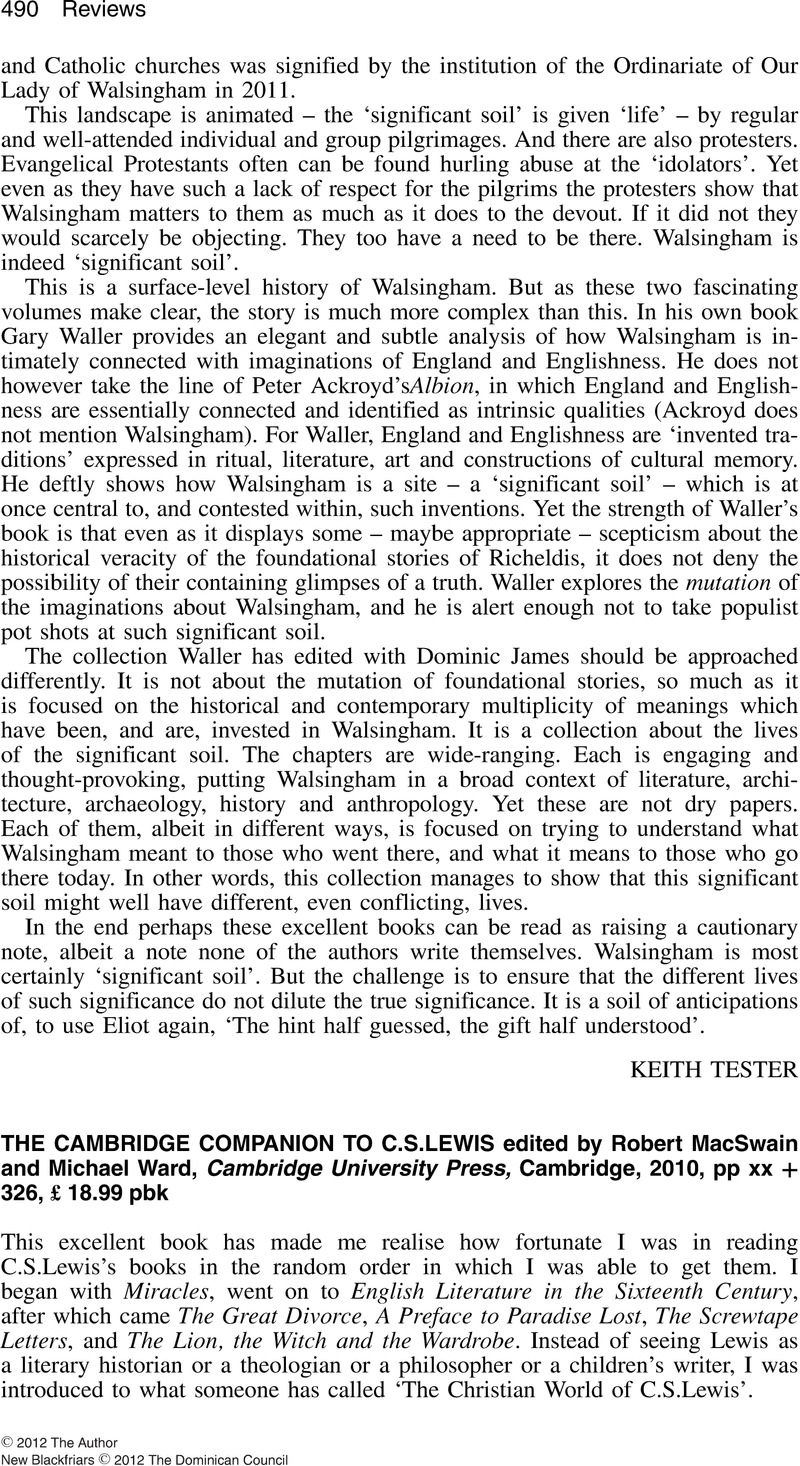No CrossRef data available.
Article contents
The Cambridge Companion to C.S.Lewis edited by Robert MacSwain and Michael Ward, Cambridge University Press, Cambridge, 2010, pp xx + 326, £18.99 pbk
Review products
The Cambridge Companion to C.S.Lewis edited by Robert MacSwain and Michael Ward, Cambridge University Press, Cambridge, 2010, pp xx + 326, £18.99 pbk
Published online by Cambridge University Press: 01 January 2024
Abstract
An abstract is not available for this content so a preview has been provided. Please use the Get access link above for information on how to access this content.

- Type
- Reviews
- Information
- Copyright
- Copyright © 2012 The Author. New Blackfriars


